Remove or Amend Beach Sand?
I have a beach front house in So. California. The front yard, 15' x 28', is beach sand. There is a fence and street between me and the ocean but I still get lots of wind, blowing sand and salt. I have a few succulents that are doing well but not much else has grown there. A few years ago I planted some olive trees after being told they would grow in coastal areas and in sand but the salt has been too much for them and they are barely surviving. I am now renovating the house and have an opportunity to start over and even remove some sand.
I would like to redesign the yard with some trees that will thrive and give me some privacy and maybe some grasses and shrubs. It seems "coastal tea tree" or "melaleuca" may be better tree choices and I believe I could plant them right into the sand with some amendment, but I am wondering whether it might be a good idea to just remove the top 6 or 12 or ? inches of sand to either make room for amendment or to totally replace the sand with soil? Would this give me more flexibility with the other plantings? Would this give me healthier and heartier grasses & shrubs? Any advice? How much would you remove? What would you add? To what depth would you mix it? I will always have salt in the air and sand blowing in but would I be better off with a different base?
Comments (32)
aloha2009
12 years agoYou don't have to look typically much further then your neighborhood to see what grows well and what doesn't. When you have an unusual piece of land, your largest pool of landscaping ideas will likely be close at hand.
Drive around the area, looking for inspiration from what others have done, and plants that appeal to you.
deviant-deziner
12 years agoYou will find that over a very short amount of time ( one growing season ) that if you do not continually amend your sandy soil with compost that it will revert to its original sandy profile.
Been there and have done that for about 30 years on the coast of CA from Mendocino to Carmel.If you remove 12 to 24 inches of sand and replace it with soil it will only be a matter of time before that soil decomposes and the sand filters back into its old area/ original profile . For this reason we don't remove the sand ( unless we have topography issues to work with ) and heavily amend it with very rich compost and then continue to top dress every year or every 6 months depending on the plants that were chosen.
We also try to choose site appropriate plants that do well with heavy sea salt spray and sandy soils.Melaleuca and its cousin Leptospermum do extremely well in our sea side climate as does Dodonea, Arbutus marina, Myoporum ( though plagued by a pshyllid and not advised to plant anymore) Acacia , Eucalyptus , Pittosporum and Monterey cypress.
In regards to grass I am extremely satisfied with a seed mix called Eco-Lawn by Wildflower Farm. It is mostly fine fescues and puts down very deep roots.
Related Professionals
Ashland Landscape Architects & Landscape Designers · Kapaa Landscape Architects & Landscape Designers · Newcastle Landscape Architects & Landscape Designers · Washington Landscape Architects & Landscape Designers · Cedar Hill Landscape Contractors · Eureka Landscape Contractors · Laguna Hills Landscape Contractors · Lexington Landscape Contractors · Thonotosassa Landscape Contractors · Vineyard Landscape Contractors · Blue Springs Decks, Patios & Outdoor Enclosures · Boise Decks, Patios & Outdoor Enclosures · Frederick Decks, Patios & Outdoor Enclosures · Lenoir Decks, Patios & Outdoor Enclosures · Brenham Swimming Pool Buildersktm11990
Original Author12 years agoThanks Deviant, that is helpful. I do have topography issues so I will need to remove as much volume as I add and will have to remove sand to make room for compost. How much compost would you recommend? To what depth would you amend it? Should I add peat or spagnum? Do you think I need to be concerned with the salt level of the amendment? Thanks for your advice!
deviant-deziner
12 years agoktm....
If you choose plants that are naturally happy in lean sandy soils you won't have to add large amounts of compost.
If you choose to plant nitrogen rich loving plants then you'll need to add copious amounts.
Sorry to be a bit vague , but as the old saying goes.... 'it depends'.A year or two ago we built a garden out on Stinson Beach. VERY SANDY, almost void of any loam or clay.
We worked in about 1.5 yards of rich organic compost per 100 square feet - that's about 4 inches of compost in the planting beds.
In the grass area we worked in a special mix of compost and peat. Normally I do not use peat but it is a great addition to heavy sandy soils due to its water holding capacity. We used about the same or slightly less and tilled it in to a depth of about a foot.If your compost is well decomposed/ aged and well balanced you shouldn't have a concern with salt. The regular compost that I used is a blend of rice hulls, grape pumice, chicken manure,
{{gwi:13921}}
From Beach House
{{gwi:13922}}From Beach Housesand you say... with a fun little mosaic accent strip.
{{gwi:13923}}
From Beach House
a year later
{{gwi:13924}}
From Beach Housephoto taken yesterday during the heavy rain storm
{{gwi:13925}}
From Beach Housektm11990
Original Author12 years agoLovely! I would be thrilled to have a planting bed that looked like that when I was done. I think I will have 6" of the beach sand removed to make room for 4" of compost and a couple inches of mulch on top. Does that sound like a reasonable plan?
Do you think it is worthwhile to have my "soil" tested so I know the level of salt and nutrients, or lack thereof, I am starting with? I put "soil" in quotes because it is, truly, purely, beach sand.
deviant-deziner
12 years agoKtm...
"Decomposition Happens ". .. . So I would suggest mounding 2 -3 inches higher than your borders and expect that your planting beds will shrink / settle an inch or two.
So please don't remove too much native sand. Save your $ and your back.
You could probably get away with only removing 3 to 4 inches of sand and then work in 3-4 or5 inches of compost and top dress with 2 inches of mulch - leaving the beds mounded high knowing that they are going to settle a couple of inches over a year .
Keep top dressing with compost or mulch each year and you'll be fine.If you plan on planting succulents, S. African, Aussie, New Zealand and a Mediterranean palette of plants you can get away with having a 'leaner' soil because they traditionally do not like a nutrient rich diet.
Photo below, another ocean side garden , this one on the Mendocino coast
{{gwi:13926}}
From Heather Garden in Gualala CA{{gwi:13927}}
From California Gardeningfeijoas
12 years agoI'm from a very salty, windy and sandy part of New Zealand and I'm with deviant-deziner on some of our native plants being great for difficult locations.
Of course you'll have local plants that are adapted to your environment.
I tried to grow all sorts of inappropriate plants, but now I'm comfortable growing what actually wants to grow. The soil can be changed and maintained with lots of ongoing expense and labour, but the effects of salt winds are nigh-on impossible to control.bahia
12 years agoI agree with the other posters that it is always useful to see what does best in similar circumstances in your local neighborhood. Trees are particularly prone to wind shaping and salt burn, and some shoreline species will handle it better than others. It is useful to remember to hose off foliage periodically, and especially after strong winds to help the plants avoid salt burn. Melaleuca quinquenervia and M. nesophylla are two species that are most commonly planted in such tough situations, things like Hakea suaveolens and Metrosideros collina 'Springfire' are also well adapted, but the Hakea can salt burn if not washed down occasionally. Other plants I've found useful for constant salt spray include Leymus condensatus 'Canyon Prince', Calandrinia spectabilis, Coprosma repens cultivars, Limonium perezii, Aloes, Aeoniums and various iceplants such as Lampranthus and Drosanthemums. Other succulents such as Cotyledon orbiculata and Bulbine frutescens will also thrive there. Other shrubs to try closer to the house where winds would be less severe, might include Alyogyne huegeli and Melaleuca incana. Shrubby palms such as Chamaerops humilis will also look good year round.
ktm11990
Original Author12 years agoThanks for the advice. Unfortunately we are one of the only lots that have any significant planting area. Everyone else has built right to the edges of their property and has not much more than some planters or small 12" strips of plantings so there isn't much to look at for inspiration. Also, much of what is planted either doesn't look so healthy or isn't what I am interested in all. There are a couple of melaleuca trees around which look good, some rosemary, some fountain grass that might look good if the dogs would stop peeing all over it and some aloe, some bougainvilla.
Also I have had luck with century plants and some "I don't know what they are called" succulents (a tall bushy relative of an ice plant?) They both do well and would look better if they weren't in the dog pee zone. I also have some giant 9' high pencil plants that have been in a planter and have thrived, and I am wondering if I can now transplant them into the sand.
Ultimately though, while I have had luck and feel confident with the succulents, I don't want a primarily succulent garden. I had that at my last house. This time I want something softer, beachier, a little wild and natural looking with some movement to it so I appreciate the other suggestions. I will look them up and have a look.
bahia
12 years agoFor examples of adapted plants, widen your search to include any beach front neighborhoods with a similar exposure and relative distance from the shore
bahia
12 years agoFor examples of adapted plants, widen your search to include any beach front neighborhoods with a similar exposure and relative distance from the shore
ktm11990
Original Author12 years agoYes, I have seen plants I like doing well in the neighborhoods just behind me, it's just that I'm not sure they have the same beach sand I do. It sure doesn't look like it. It looks like dirt. But I feel more confident now about having a plan for amending my sand and a variety of salt-tolerant plants that will grow for me. I do love echium so that, melaleuca or maybe the coastal tea tree (Any experience with those?), some aloe & maybe a couple of other succulents and some, hmmmmmm, have to think about it.
Deviant, what was that orange low plant massed on the hillside Mendocino garden you posted? And what it that tall plant with the orange tips flanking the echium in the first garden you posted?
One more question. Do I need to take any special care or precautions when planting as the plants have roots nestled in nice rich brown dirt when I buy them and I am about to put them in some harsh salty sand. Should I prep the hole in any special way to minimize the shock?
Thanks!
deviant-deziner
12 years agoKtm,
The orange low plant is a heather. That garden is mostly heathers, ericas, small conifers and some coastal adaptable plants /The orange plant growing behind the Salvia leucantha ( mexican sage ) is called Montbretia or Crocosmia. It is a small bulb ( actually a corm) and is very happy growing near the beach.
When I gardened up in Mendocino we had acres of meadow land covered with this plant mixed in with calla lilies and wastonia ( another bulb like plant that was a hardy as nails )It would be a good idea to throw in a shovel full of compost and mix it in with the sand before planting a nursery grown plant to ease the transition of the roots into the sandy soil.
Some other plants that I have had great success with growing in a beach side setting are :
cistus ( rock rose)
coyote bush - baccahris
armeria
limonium
dudlya
licrorice plant -helichrysum
lithodora grace ward.
Passion vine - coral seas will EAT an entire house in two seasons.
calla lilies
salvias
santolina
arctotis - very good in pure sand.
red hot pokers
euphorbias
african daisy
rosemary
euryops - common yellow daisy, - a work horse of a plant.
some of the ceanothus and arctostaphylos - any of the ones with coastal names such a pt. arena or pt. sur.very successful trees are : pittosporums, acacias, leptospermums ( especially like laevigatum ) , melaleuca, eucalyptus ficifolia.
Many of the ornamental grasses do very well. so well in fact that you need to be a little careful about them spreading far and wide.
this photo below is up hill from the water. the soil has a bit more clay but it gets a lot of fog and salt air.
bearded iris, santa barbara daisy, mexican sage, rock rose, bulbinella, lavender and blue daisy ( felicia)
{{gwi:13929}}
From portfolioMay08.jpgktm11990
Original Author12 years agoThanks so much for the ideas DD. There is a plant in another of your photos from that garden that is tall and lanky with orange tips. It is flanking what looks like an echium. It is in the planting bed with the blue gazing ball. What is that? (I would attach the photo but can't figure out how)
deviant-deziner
12 years agoKtm...
That tall lanky plant with the orange tips is one of my all time favorite plants : Leucadendron 'jester'.there are lots of wonderful Leucadendron varieties and the great news is that they adapt really well to fast draining nutrient lean soil - ie : sandy soil. - your sandy soil is perfect.
Some great links with more info :
//www.smgrowers.com/search/basesearch.asp?
strSearchText=leucadendron&x=0amp;y=0Australian Native plant Nursery in CA
http://www.australianplants.com/plants.aspx?id=1339This garden below with Leucadendron Safari Red is located on Belvedere Island - it sits in the S.F Bay off the coast of Marin County.
{{gwi:8553}}
From Garden Pornbahia
12 years agoThose orange tipped plants behind the blue ball are Leucadendrons, which may not be a good choice for your situation which will definitely receive more salt spray. As well, the Crocosmia/Montbretia foliage wont look as good in your situation either; getting crispy foliage in full sun and salty winds of southern California. If you like tall vertical flowering things, then Kangaroo Paws/ Anigozanthus flavidus cultivars and Poker plants/Kniphofia
uvaria or Kniphofia thompsonii and Verbena bonariensis would be good candidates. As to amending your planting holes to provide a transition between pure beach sand and container mix soil; dig planting holes 3x the container width and amend 50% with good compost. I'd suggest using drip emitters for irrigation to minimize water loss to winds, and starting with smaller sized plants over specimens or 15 gallon sizes which will lose water more quickly to the winds. Pencil Euphorbia/ Euphorbia tirucallii 'Sticks on Fire's would be well suited to your location, as is the straight green variety. If you like the looks of foliage which moves in the winds, then South African restios such as Chondropetalum tectorum, Thamnochortus and Elegia capensis might also be good candidates. Aloes such h as Aloe speciosa/thraskii/arborescens/camperi/striata/marlothii/vera should also do well there.ktm11990
Original Author12 years agoThanks for your thoughts. I guess I need to get busy googling some plant images.
Saltair
12 years agoBeautiful pics in this thread. I am gardening on the coast of NC. I'm on the back side of the island so I don't get as much salt spray. (All bets are off when there's a good storm.) The first 2 years in my house, I amended, amended, amended. While I do get a large variety of plants to grow well, I noticed that each spring, the vegetable garden had turned to sand again. What water doesn't roll off the top drains pretty quickly. My comment last year was that the sand seems to just burn or eat up the compost. This year I've gone to raised beds for veggies and just place the compost on top. (Started last fall with compost covered with hay in alot of my flower beds. The ground looked a great deal richer when I uncovered it this spring.) Somewhere I read a comment that the tide has the effect of pulling the nutrients downward. I can't seem to find any information online but don't doubt it. Any experience with this?
Brad Edwards
12 years agoCheck on San Onofre state park and their groves of bamboo. They grow perfectly in socal and perfectly in the sand.
bahia
12 years agoAdvice to use bamboo right at the beach in pure sand in southern California is a recipe for high water bills if you don't like looking at tip burned yellowed foliage in summer and fall. First zone of exposure with wind and salt and sand isn't an ideal situation for any bamboo I know of, excepting thuggish Phyllostachys aurea which will tolerate it but still look stressed. I'm not familiar with the referenced bamboo at San Onofre State Park, but I'm willing to bet it is more likely to be Arundo donax than bamboo, and probably lays adjacent to water entering the sea.
Improving beach sand takes years of continual addition of compost as mulch, one or two years of mulching wont bring much long term benefits; you have to add it several times a year. I find it much easier to work with adapted plants that prefer lean nutrient poor soils and fast drainage and are wind and salt tolerant as a design starting point. Easier than trying to convert an entire garden from sand to good loamy soil.
Here is a link that might be useful: Oz Coastal Plants
nandina
12 years agoTo Saltair: A few thoughts on your questions from a pro with experience sand gardening along the east coast both north and south. It is more the southern coastal sands that seem to be heavily affected by tidal action. Those of us who grow amaryllis in southern seaside gardens are very aware of the problem as every few years we must dig and reset them higher to ensure blossoms. Left unattended the bulbs slowly disappear beneath the soil. Continued heavy mulching and decay of it over the years does help stabilize garden beds.
When vegetable gardening in your type of sandy situation I turn to a product I detest, landscape fabric. Build raised beds at least 15" high. Line the bottom of each bed with landscape fabric. Once landscape fabric is installed fill the beds with a mix of soil, compost, etc. and most important, about 15% ground pine mulch type bark worked throughout. Some have used black plastic as bed liners. If you go this route be sure to poke holes in it for drainage.pippimac
12 years agoSaltair, I'm on very, very sandy soil, close to the beach. I wouldn't have a clue about tidal affect on nutrients, but I can guarantee that sand devours organic matter and it needs to be added as much as possible.
I have a 12-month growing season and add compost, etc whenever I plant.
And I've been slowly lowering my raised gardens. They're now 'sunken gardens', which, combined with regular compost additions, is the only way I've found to maintain moisture.
That's only in my food gardens: the rest are adapted to dry, sandy conditions. I've got lots of lovely local shrubs that I mix up with tough exotics like bearded iris, lychnis, soldier poppies, honeywort, lamb's ears...
A very thick layer of wood mulch makes a huge difference, but I don't recommend a woody mulch where it will be dug in, creating nutrient issues.shaxhome (Frog Rock, Australia 9b)
12 years agoKtm,
I've attached what I consider to be a very good list of Oz coastal plants, most of which you should be able to get from that Californian Oz Plants nursery. At least some ideas to go with the great advice you've received here from this site's experts.I'd also add my own recommendation of Banksia integrifolia, which does grow in pure sand and is used extensively as a windbreak between ocean and houses. Fast growing, beautiful flowers, tough as old boots and birds LOVE it! Can grow into quite a large tree, though...
{{gwi:13930}}
Regards,
Shaxdeviant-deziner
12 years agoOooooo la la - love that Banksia !
Thanks for the link to the Oz Coastal plants. Dreamy.bahia
12 years agoBanksias can look lovely, and there is quite a collection of thriving species at the UC Santa Cruz Botanic Garden, but they aren't necessarily fullproof. I've tried Banksia integrifolia several times in client's gardens here in the SF Bay Area, and never had them last more than 3 years. The ones in Santa Cruz are all growing in sandstone soils of old uplifted marine terraces and thriving. Poorer quality higher salt municipal southern California water can be hard on many Australian Proteaceae members as well. They might not be a good fit, I'd ask around at your local nursery/landscapers if they're a good candidate in your area. I've been much more successful with other Australian Proteaceae plants such as Isopogon formosus and several Grevilleas. Hard to say why the Banksias have been so much touchier, up there with Telopeas...
shaxhome (Frog Rock, Australia 9b)
12 years agoBahia...as a matter of interest, with which of the Grevilleas have you had the most success? I have a collection of around 30 different ones in my place in Oz...and don't get me started on Telopeas! My home state's flower, and it's a huge call, but I consider the waratah (T. speciosissima)THE MOST BEAUTIFUL flower in the world! But I can't grow 'em, even after decades of trying...
{{gwi:13931}}
Regards,
ShaxBrad Edwards
12 years agoBahia is right, I do think it was andaro donax. Surfers created natural paths throughout the stuff "that looks just like Bamboo" and it grew extremely well, I remember thinking that it looked like it would help control erosion.
bahia
12 years agoArundo donax is another one of those escaped weeds that is on the list of invasive species, particularly invasive of riparian habitats all along the coast and also in the southern California desert/Colorado River corridor. I hate this plant myself, as I've had running battles with it invading from adjoining neighbor's gardens on a few jobs for clients.

Here is a link that might be useful: Garden Palette
bahia
12 years agoIt would be easier to refer you to the lists of species available from larger wholesale nurseries. It might be useful to know that California growers have shown no inclination to hybridize between species or graft delicate/difficult growers onto tougher Grevillea species root stock, as has the Australian nursery industry. So the end result is that we don't have 100's of cultivars and species to choose from. We also have less varieties here because much of California has factors such as occasional severe frosts, more alkaline water quality or too rich clay soils with poor drainage which limit Grevillea's success. They are at their best along the coast with non-Colorado River water supply.
If you're interested in seeing the range of species available and photos/descriptions of same; look at the web sites for San Marcos Growers Wholesale Nursery and Monterey Bay Wholesale Nursery, along with Jo Oconnel 's nursery down in Ventura County.
manifest
12 years agoDon't know if this has been suggested, but look at stipa tenuissima (Mexican feather grass). If you're looking for a grass that does well by the beach and has movement, this one should please you. The slightest breeze gets it blowing softly. It reseeds, but isn't aggressive.
BTW, I'm also in LA by the beach. Just moved westside from Mid City and am trying to figure out what to do with our front and back yards with all this sand that we have. I can commiserate.
ktm11990
Original Author11 years agoI want to thank everyone who took the time to post such detailed and wonderful advice here! My renovation is finally done and I am getting ready to plant. At last! I have been closely reviewing all the suggestions and advice and have come up with what I hope is a good plan.
I had 6" of sand removed, added an equal amount of compost and have irrigation going in as soon as I finalize my planting scheme. I have been using Pinterest to gather images of all the plants you recommended and narrow down selections. The San Marcos Growers site as well as some of the other links posted have been invaluable as a resource for what is available in my area and in helping select appropriate plants.
I am attaching my plan. The house faces the ocean but there is a parking lot & a lot of tourist foot traffic in between so we put up a 4' wall with another 2' of semi-open wood fence on top. Also, just to the south west of the house is a large lifeguard station / maintenance area that isn't pretty to look at so the tree is placed to soften the view of that. Finally, the sides of the house remain sand in this plan. On the north side, there is only 16" to our property line and on the south side, the same plus another 3' that belongs to our neighbor. That area is needed for access and I'm not sure what else to do with it. I am imagining gravel would just get mixed in and covered with sand soon anyway? I guess we could pour concrete?)
I am also including a link to my Pinterest page with the plant selection. There are a couple extras as I can't quite decide which Leucadendron & which Protea I prefer.
I would love to hear any thoughts or comments before I start buying plants! Thanks again!
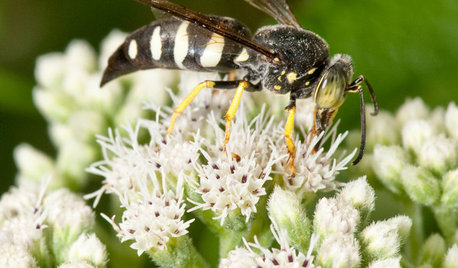
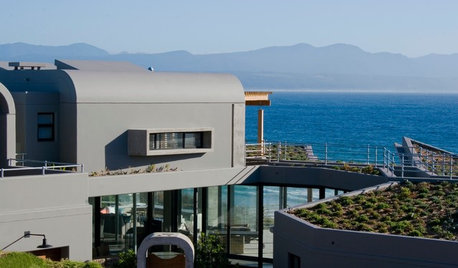
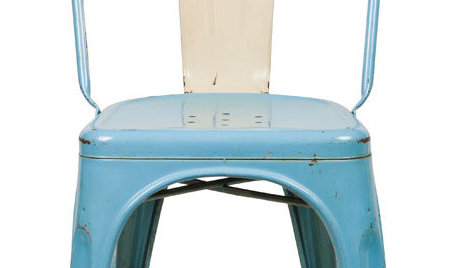
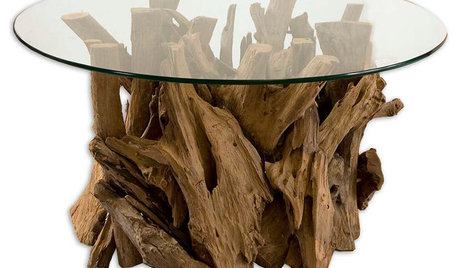
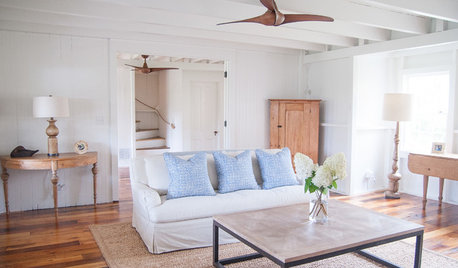
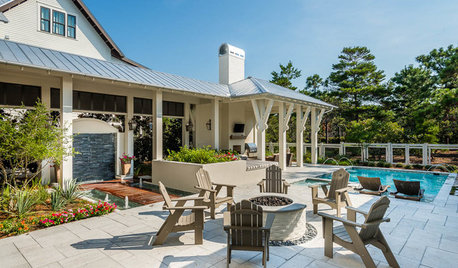
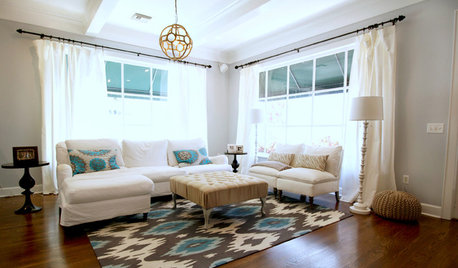
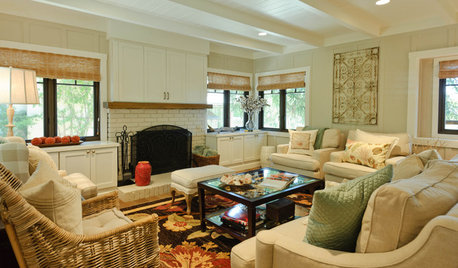
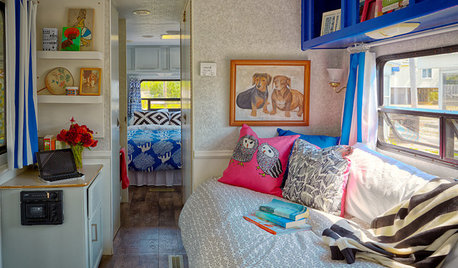
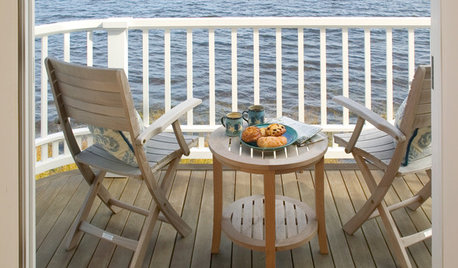







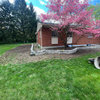

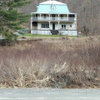
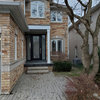
deviant-deziner